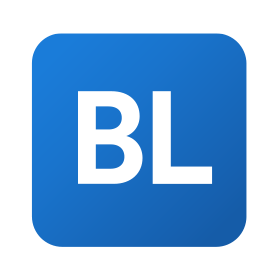Teachers (and leaders!) have faced more over the past few years than ever before. Recurring changes to modes of instruction, rising academic expectations, and decreasing resources means new teachers and paraprofessionals are tackling challenges they never expected when they started their training. The steep learning curve is hard on teachers: 15% of new teachers leave the profession and another 14% change schools after their first year, often as the result of feeling overwhelmed, ineffective, and unsupported. It’s an enormous loss to schools and, ultimately, to students.
Most beginning teachers come to the profession with energy, enthusiasm, high hopes, and a strong desire to help children learn. Yet, all too often, potentially excellent teachers are overwhelmed by their first year in the classroom. The challenge schools are facing is to give these educators the kind of support they need to not only remain in the profession but to develop into the kinds of educators able to teach to today’s high standards.
But why are teachers leaving? And what can you do about it?
Inexperience in Classroom Management
Classroom management is often underemphasized as a priority for new teachers. New teachers are now working in in-person, hybrid, and remote instruction settings–all without experience or training in managing a classroom, let alone help adapting their management skills to multiple instructional environments. As a result, teachers can enter the profession unprepared for the realities of working with students.
Key skills like time management, developing routines/procedures, and keeping students on task are learned on the job. If there is no systematic learning, professional development, and support in these areas, new teachers and paraprofessionals suffer.
Helpful Reading
Creating and Improving Class Rules and Procedures with Students – Help your teachers move closer to a student-centered classroom with these tools for developing and implementing class rules.
Underemphasized Culture of Learning
A culture of learning is a topic that is not often discussed, modeled, or practiced for new teachers.
What is a culture of learning? A culture of learning means that your school supports new teachers in taking on a growth mindset and pursuing learning opportunities–something we encourage in our students but forget to cultivate in ourselves.
A culture of learning starts with you as a school leader. Are you seeking out new ways to learn and investing in your own professional development? As you hone your skills and pass on the culture of learning to your teachers, you will find that they can do the same for their students.
Helpful Reading
Empowering and Supporting Teachers as Adult Learners – Hear from one principal about how she helped her teachers see themselves as learners.
Little Guidance in Instructional Design
Good lesson planning is essential to the process of teaching and learning. But the development of interesting lessons takes a great deal of time and effort. New teachers often feel overwhelmed with planning the instructional resources and learning tasks they will implement in their classrooms. Case studies have observed novice teachers struggling “just trying to come up with enough curriculum” and spending 10 to 12 hours a day juggling lesson planning; grading; and the myriad demands of paperwork, committees, and extracurricular assignments.
Teachers need support in developing robust and rigorous lesson plans that are based on quality resources, backward planning, and appropriate pacing.
New teachers especially are trying to learn preparation and intentional instructional design with all students in mind. Without these skills, it is not possible to lead a well-managed and effective classroom environment that is conducive to learning.
Helpful Reading
BetterLesson Strategies – This library of teaching resources offers tools, lessons, and classroom adaptations to give your teachers a ready-made lesson plan and the skills to make their own.
Lack of Direct Instructional Delivery Training
One of the biggest struggles many early-career teachers have is engaging all students in learning.
Many early-career teachers come into the classroom with a wealth of content knowledge, but varying instructional delivery to meet the needs of an entire classroom can only be learned in practice. These early-career teachers struggle with a lack of student engagement and motivation which can lead to increased classroom management issues and a lack of significant student progress in their learning.
New teachers must be trained in how students learn best and how implementing a variety of student-centered instructional strategies will create an engaging, rigorous classroom environment that motivates students to learn.
You as a leader may not have the time or expertise to demonstrate strong instructional delivery methods for each specific grade level and content area. But determining how to support new teachers in understanding the methods for successful, engaging instructional delivery is key to success in the classroom. That’s why BetterLesson offers teacher professional development in varied methods of instruction and how to keep students involved in learning.
Helpful Reading
Top 5 Instructional Strategies for Student-Centered Teaching and Learning – Share these strategies with your teachers for help developing a student-centered classroom.
Trouble Establishing Successful Family Engagement
A big challenge new teachers are confronted with is the expectation of knowing how to build relationships with families, develop consistent communication practices, and deliver updates during family conferences–all without proper guidance or modeling. These expectations are hard to execute, especially for those new to the profession.
Without previous experience or a dedicated mentor, early-career teachers and paraprofessionals may not feel comfortable relying on colleagues and likely did not receive instruction during certification in how to navigate family/caregiver relationships.
But when you as a leader can clearly communicate and teach early-career teachers how to talk to and involve families, you are improving engagement and making it easier to build strong partnerships with the goal of supporting students.
Helpful Reading
Creating and Implementing a Family Partnership Plan – Help your teachers find ways to optimize student achievement with caregiver involvement with this strategy from BetterLesson.
Are you ready to help beginning teachers quickly develop a sense of growing competence and have a significant impact on their effectiveness in the classroom? Join us for our free Spring Learning Series as industry leaders discuss ways to help your early career teachers and paraprofessionals for the 2022-2023 school year. Learn more about webinar sessions here and sign up below.








